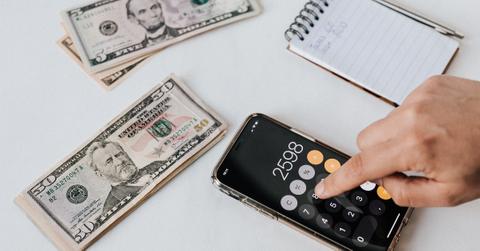Building Emergency Savings Can Recession-Proof Your Finances
Even if you have a couple thousand saved up, that won’t cover your expenses if you lose your job. So, how much do you need in emergency savings?
Oct. 11 2022, Published 4:14 p.m. ET

Money is tight these days. With the cost of everything from rent to roast beef on the rise, it’s getting harder to put money in your emergency fund.
If you don’t have enough in your savings to cover a big expense like an unexpected car repair or a broken-down furnace, you aren’t alone. According to a Bankrate survey, less than half of Americans have enough in their savings account to cover a $1,000 unplanned expense.
Even if you have a couple thousand saved up, that won’t cover your expenses if you lose your job. So, how much should you have in your savings for emergencies?

Consider these factors when building up your emergency savings.
How much you need to save for an emergency depends on several factors, such as the number of people in your household and your monthly expenses. If you’re single and living alone, you may need to save a little more than someone who is married and has a second income to fall back on.
You’ll get different opinions from the various financial gurus out there on how much you should have saved. Shark Tank’s “Mr. Wonderful,” Kevin O’Leary recommends you save at least three months’ worth of salary for emergencies.
Rachel Cruze, the daughter of popular financial advisor Dave Ramsey, says to have three to six months' worth of expenses in your emergency fund, but only after you’ve paid off your debts.
Most financial advisors suggest saving three to six months of your expenses, not your salary. However, that may not be enough amid the impending recession.
Suze Orman just upped her recommendations due to the current state of the economy. She now suggests you have at least 12 months' worth of expenses set aside for emergencies, MarketWatch reports.
Here's how to calculate your emergency fund.
When calculating how much you should save for emergencies, you should look at your monthly costs for:
Housing (rent or mortgage payments)
Utility bills (gas, electric, water, trash)
Phone, cable, and internet
Insurance (health, car, and home)
Transportation (gas, car payments, public transit)
Debts (credit cards and loans except for your home or car)
Groceries
These are your essential expenses. You can also consider non-essential expenses like dining out, vacations, and clothes shopping, but these are expenses that are easier to eliminate from your spending when times get tough.
Where should you put your emergency fund money?
You’ll actually lose money by keeping your emergency fund in a low-interest savings account, O’Leary said in an interview with CNBC. The average interest rate for savings accounts is about 0.16 percent.
“Right now, in a bank account, you’re getting [very little] interest, and inflation is over six percent. So you’re actually losing money every 12 months,” O’Leary told CNBC.
Sticking your emergency fund in a high-yield savings account will give you a higher return. For example, LendingClub offers a high-yield savings account with an interest rate of 2.85 percent. So if you put $2,000 into an account, your money will make an extra $55 over a year.
